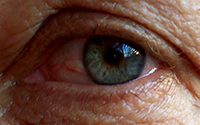
What Causes Rosacea?
The cause of rosacea symptoms remains unknown. There is evidence that it is:
- genetic[i],
- caused by bacteria in mites that occur naturally on all human skin[ii],
- caused by the same condition as stomach ulcers and several other H. pylori-related digestive issues[iii],
- linked to underlying chronic inflammatory conditions (such as GERD (gastroesohpageal reflux disorder), as well as other types of inflammation-causing gastrointestinal disorders, hypertension (high blood pressure), female hormone imbalance, urogenital diseases (such as urinary tract infection), inflammatory cytokines, and metabolic, immune and endocrine changes)[iv],
- connected to certain autoimmune disorders (such as Type I diabetes and celiac disease)[v],
- an overgrowth of bacteria in the small intestine[vi],
- A reaction to the ATP in the body[vii].
There have been several other theories behind the condition, as well, but none have been fully proven. Moreover, it appears that different people may experience the condition for different reasons, so there may not be a single causes as much as several and they may work in combination with each other.
What is the Cure for Rosacea?
 Since the cause of rosacea has yet to be identified, no cure is known, either. No matter what any product sales page or person may tell you, a cure for rosacea does not yet exist.
Since the cause of rosacea has yet to be identified, no cure is known, either. No matter what any product sales page or person may tell you, a cure for rosacea does not yet exist.
That said, in the future, any rosacea cures that are developed may be based on the cause of the symptoms for a given sufferer.For instance, if your rosacea is caused by the bacteria H.pylori, then solving that problem could be the cure for you. If, however, you have an underlying autoimmune condition, then it is that problem which will need to be addressed. As of yet, neither the cause(s) or cure(s) have been found.
Therefore, it’s important to look into treatments to reduce the symptoms and work to prevent their return as much as possible. I talk a great deal about my own strategies to live this Rosy Lifestyle in my Rosacea Blog and my YouTube channel.
To find the best treatment for your rosacea, speak with your doctor about the list of possible causes as well as any triggers you have identified. A systematic approach will be very helpful in finding the fastest road to coping with – and potentially overcoming – your symptoms.
There are many types of conventional and natural rosacea treatments available to help you manage your symptoms.
References
[i] New Study Discovers Genetic Variants May Be Linked to Rosacea http://www.rosacea.org/weblog/new-study-discovers-genetic-variants-may-be-linked-rosacea
[ii] Bacteria in Mites May Cause Rosacea http://www.rosacea.org/rr/2007/summer/article_4.php
[iii] The link between Helicobacter pylori infection and rosacea http://www.ncbi.nlm.nih.gov/pubmed/12224687
[iv] Rosacea is associated with chronic systemic diseases in a skin severity-dependent manner: Results of a case-control study http://www.ncbi.nlm.nih.gov/pubmed/26256428
[v] New Study Discovers Genetic Variants May Be Linked to Rosacea http://www.rosacea.org/weblog/new-study-discovers-genetic-variants-may-be-linked-rosacea
[vi] Small intestinal bacterial overgrowth in rosacea: clinical effectiveness of its eradication http://www.ncbi.nlm.nih.gov/pubmed/18456568
[vii] Dark Side of ATP May Hold Clues to Cause of Rosacea http://www.rosacea.org/press/archive/20070313.php
*Please remember that I’m a rosacea blogger and patient with the condition, but I’m not a doctor. This is information I’ve collected online and have received from my doctor, but I’m not a medical professional or a skin care expert. For an official diagnosis or advice, please make an appointment to see your doctor!

![What is Rosacea? Rosacea Symptoms, Triggers & Causes [With Pictures] - Rosy JulieBC What is Rosacea? Rosacea Symptoms, Triggers & Causes [With Pictures] - Rosy JulieBC](https://rosyjuliebc.files.wordpress.com/2017/10/what-is-rosacea.jpg?w=760)




 Although the term “acne rosacea” is used as though it is a form of this condition, it is actually a kind of misnomer for subtype 2.
Although the term “acne rosacea” is used as though it is a form of this condition, it is actually a kind of misnomer for subtype 2.